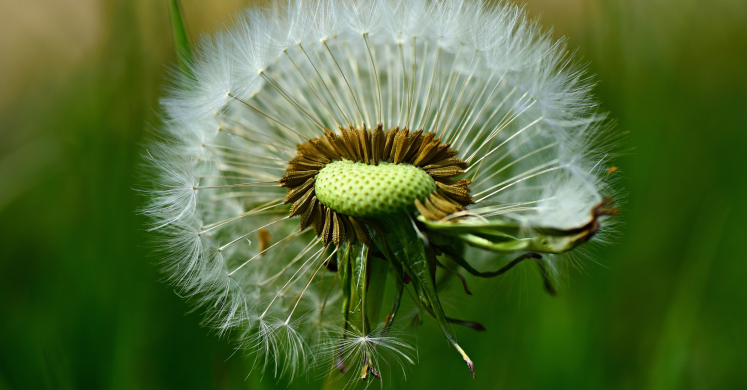Blog

#bioPGH: The Secret Life of Seeds
 A resource of Biophilia: Pittsburgh, #bioPGH is a weekly blog and social media series that aims to encourage both children and adults to reconnect with nature and enjoy what each of our distinctive seasons has to offer.
A resource of Biophilia: Pittsburgh, #bioPGH is a weekly blog and social media series that aims to encourage both children and adults to reconnect with nature and enjoy what each of our distinctive seasons has to offer.
Gardening enthusiasts can tell you that seeds need specific conditions in which to germinate (first starting to grow out of the seed). Most seeds prefer dark conditions, most have preferred temperature ranges for the soil, many have a dormancy period and cold or heat periods that need to be satisfied — and that’s before the “real” work begins of tending to the little seedlings! While we wait our own planting season, and perhaps start some little seedlings, let’s take a deeper dive into the weird and quirky seed needs out there!
Dormancy – While awaiting the conditions we will talk about it, it’s important that we have a clear idea of what seed dormancy is. In a nutshell (or perhaps we should say, in a seed coat?), dormancy is the process of a seed delaying germination until the proper conditions for optimal seedling growth. This mechanism is regulated in part by plant hormones like gibberellin and abscisic acid, but the highly complex biological process hasn’t been completely teased out for all scenarios. We will just summarize that dormant seeds are safely waiting for ideal conditions before they germinate. (A few more recent studies have further teased out other cell signaling and hormones that may be a part of the process, if you’re interested.)
Chilling Period – This may be familiar to many Pennsylvania gardeners and naturalists as many of our native plants and favorite garden additions — like milkweeds and coneflowers — produce seeds that need to be cold stratified (kept intentionally chilled) before germinating. A number of plants from regions with cold winters have seeds with required chilling times before germinating. As an adaptation, this helps protect a little seed from starting to grow while there is still a significant chance of freezing. Tropical plants tend not have a chilling requirement while some plants might have a requirement of over a thousand hours of chill time before germinating!
Pyrophytic Plants – I rarely miss an opportunity to enjoy a good bonfire, so these might be the plants for me! The term pyrophytic plants refers plants adapted to tolerate fire to some degree. This can include plants with bark of different thickness to minimize fire damage, trees with high crowns to decrease the loss of foliage and…plants that actually need fire for their seeds to germinate. Seeds from such plants are often coated in a tough resin that, in nature, can only be melted by fire. (Of course, I may joke about a good bonfire, but any managed burn should be conducted by a trained professional only. Errant campfires and gender-reveals-gone-wrong tend to do far more harm than germination is worth.)
Going Through a Gut – As strange as this may sound, some seeds sprout successfully after being…pooped out. Since plants aren’t generally highly mobile themselves, they often rely on wind or wildlife to help disperse their seeds; and wildlife seem to be more than happy to oblige in this portion of the circle of life! Plants may attract a hungry frugivore with bright, colorful fruits, and once their seeds have been ingested via birds, bears, etc., those animals will digest the fruits and expel the seeds. Researchers have noted that the seeds best suited for this strategy tend to be relatively small (relative to the animal snacking on them) with tough seed coats that can withstand the intensity of stomach fluids.
Scarification – Since some seeds were adapted to benefit from the harshness of nature, we sometimes need to recreate that “harshness” in gardens and agricultural settings before planting. Some seeds need to be “scarified” before they can be planted, this means somehow getting through the seed coat. Scarifying seeds can include soaking them in water, scraping them against a hard surface to break the seed coat, or sometimes treating the seeds chemically before planting. Nature just protected some seeds quite well!
Well, now that we have talked about seeds, are you itching to start planning your garden for this year? Be sure to let us know in the comments or share on social media with the #bioPGH!
Connecting to the Outdoors Tip: If you're getting a little spring fever, check out our Greener Garden Guide while we wait for the last of winter! It's full of all sorts of tips and tricks for a beautiful, eco-friendly garden!
Continue the Conversation: Share your nature discoveries with our community by posting to Twitter and Instagram with hashtag #bioPGH, and R.S.V.P. to attend our next Biophilia: Pittsburgh meeting.
Resources
Penn State Extension – Seed and Seedling Biology
Images: Both header and cover, Pixabay, public domain

